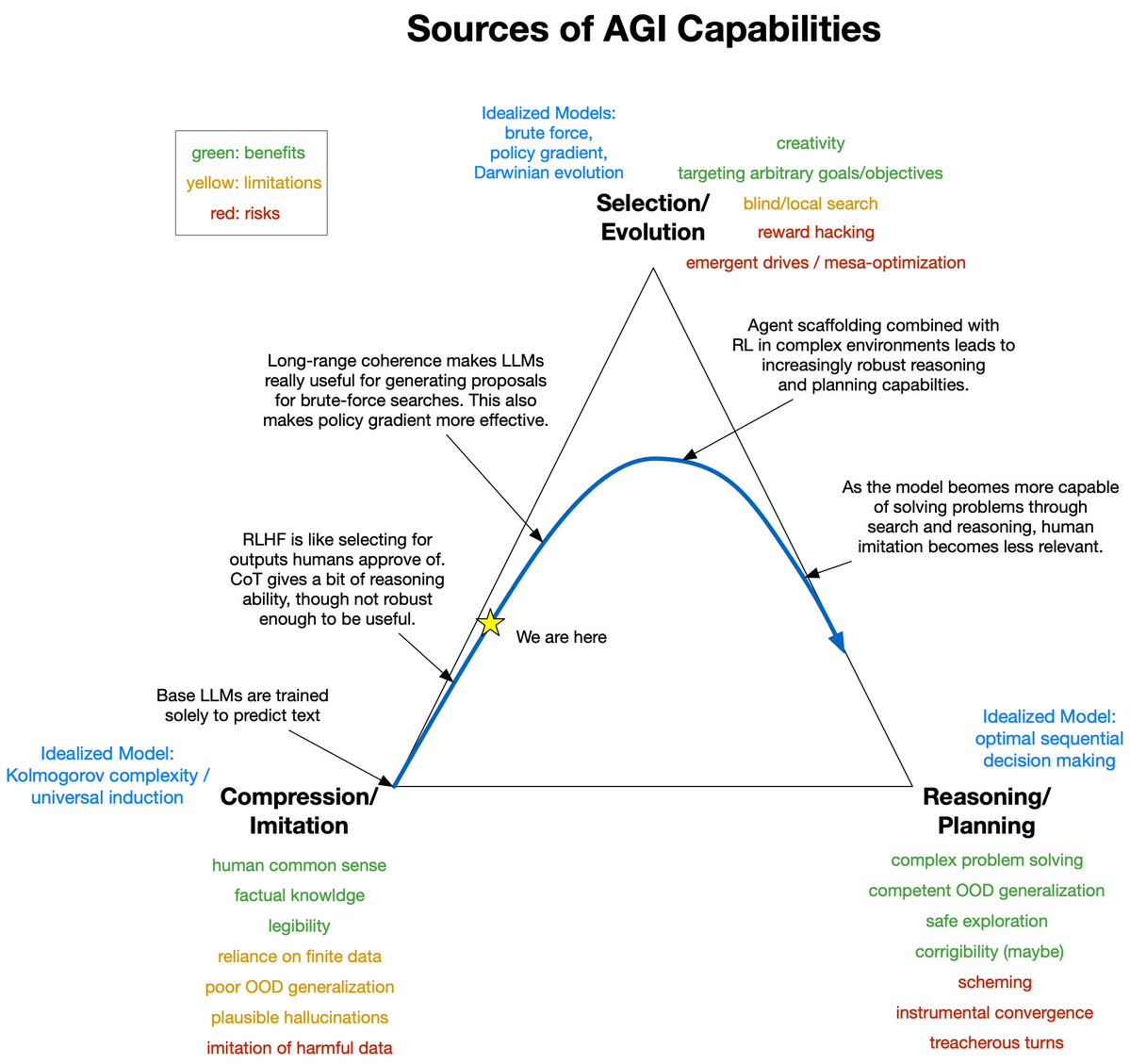Redwood Research
Posts
Wiki Contributions
You seem to be talking primarily about Ilya, but it seems especially unclear why Jan is also leaving now.
I think this is a very important and neglected area! That its tractability is low is one of its central features, but progress on it now greatly aides in progress later by making these hard-to-meaure aims easier to measure.
The only way ChatGPT can control anything is by writing text, so figuring out that it should write the text that should appear in the image seems pretty straightforward. It only needs to rationalize why this would work.
I think the relevant notion of "being an agent" is whether we have reason to believe it generalizes like a consequentialist (e.g. its internal cognition considers possible actions and picks among them based on expected consequences and relies minimally on the imitative prior). This is upstream of the most important failure modes as described by Roger Grosse here.
I think Sora is still in the bottom left like LLMs, as it has only been trained to predict. Without further argument or evidence I would expect that it probably for the most part hasn't learned to simulate consequentialist cognition, similar to how LLMs haven't demonstrated this ability yet (e.g. fail to win a chess game in an easy but OOD situation).
I'll add another one to the list: "Human-level knowledge/human simulator"
Max Nadeau helped clarify some ways in which this framing introduced biases into my and others' models of ELK and scalable oversight. Knowledge is hard to define and our labels/supervision might be tamperable in ways that are not intuitively related to human difficulty.
Different measurements of human difficulty only correlate at about 0.05 to 0.3, suggesting that human difficulty might not be a very meaningful concept for AI oversight, or that our current datasets for experimenting with scalable oversight don't contain large enough gaps in difficulty to make meaningful measurements.
Adversarial mindset. Adversarial communication is to some extent necessary to communicate clearly that Conjecture pushes back against AGI orthodoxy. However, inside the company, this can create a soldier mindset and poor epistemic. With time, adversariality can also insulate the organization from mainstream attention, eventually making it ignored.
This post has a battle-of-narratives framing and uses language to support Conjecture's narrative but doesn't actually argue why Conjecture's preferred narrative puts the world in a less risky position.
There is an inside view and an outside view reason why I argue the cooperative route is better. First, being cooperative is likely to make navigating AI risks and explosive-growth smoother, and is less likely to lead to unexpected bad outcomes. Second is the unilateralist's curse. Conjecture's empirical views on the risks posed by AI and the difficulty of solving them via prosaic means are in the minority, probably even within the safety community. This minority actor shouldn't take unilateral action whose negative tail is disproportionately large according to the majority of reasonable people.
Part of me wants to let the Conjecture vision separate itself from the more cooperative side of the AI safety world, as it has already started doing, and let the cooperative side continue their efforts. I'm fairly optimistic about these efforts (scalable oversight, evals-informed governance, most empirical safety work happening at AGI labs). However, the unilateral action supported by Conjecture's vision is in opposition to the cooperative efforts. For example a group affiliated with Conjecture ran ads in opposition to AI safety efforts they see as insufficiently ambitious in a rather uncooperative way. As things heat up I expect the uncooperative strategy to become substantially riskier.
One call I'll make is for those pushing Conjecture's view to invest more into making sure they're right about the empirical pessimism that motivates their actions. Run empirical tests of your threat models and frequently talk to reasonable people with different views.
(Initial reactions that probably have some holes)
If we use ELK on the AI output (i.e. extensions of Burns's Discovering Latent Knowledge paper, where you feed the AI output back into the AI and look for features that the AI notices), and somehow ensure that the AI has not learned to produce output that fools its later self + ELK probe (this second step seems hard; one way you might do this is to ensure the features being picked up by the ELK probe are actually the same ones used/causally responsible for the decision in the first place), then it seems initially to me that this would solve deep deception.
Then any plan that looks to the AI like it's deception could be caught regardless of which computations led to them (it seems like we can make ELK cheap enough to run at inference time).
It's a tool for interacting with language models: https://generative.ink/posts/loom-interface-to-the-multiverse/

Their addendum contains measurements on refusals and harmlessness, though these aren't that meaningful and weren't advertised.